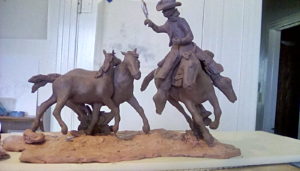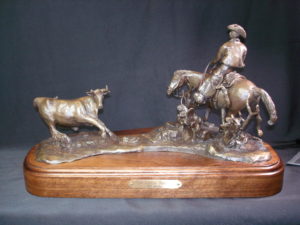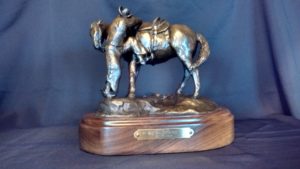Country Lifestyles
A true cowboy – Bill Whitley
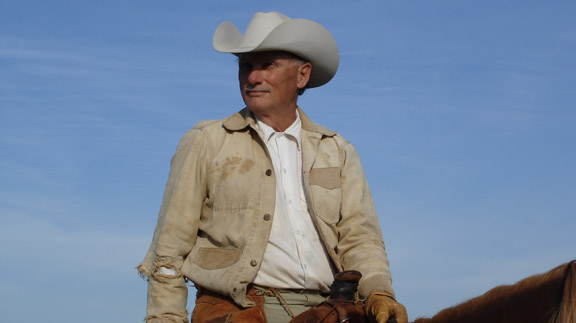
By Judy Wade
When 2016 Cowboy True judges awarded Bill Whitley the first place ribbon for his sculpture “The Cactus Bloomers,” they were honoring a true cowboy.
Born on the Buckle L near Childress, as a child he and his brother, Kevin, had the opportunity to live on some of the major ranches in West Texas and meet many of the legendary cowboys who worked there. The son of Harry and Charlotte Whitley, his father’s cowboying took them to various ranches such as the 6666’s, Waggoners and Halsells.
Whitley himself spent 22 years working for the Halsells and later Dr. Crump, both in Clay County.
Although he had no formal training in art, Whitley said he began drawing with a pen and pencil when he was about six. “My mother had a lot of talent, but she never had the chance to expand it. I also have an uncle who is talented,” Whitley related.
Whitley attended school at Henrietta. “My third grade teacher, Mrs. Lucille Arnold, taught us some art, but her resources and supplies were limited. Mr. Glen Wilfong was not an art teacher, but he showed me there is a big, wide world out there,” he continued.
He does pen and ink drawings, oil paintings and charcoal sketches in addition to the sculpting. His first attempt at sculpting was a set of bookends featuring Hereford bulls done in bas relief in bakeable clay. They are mounted on cedar cut on the Halsell ranch and held in place by horseshoes that were the last set pulled from one of his favorite horses. To read more pick up a copy of the June 2016 issue of NTFR.
Country Lifestyles
While We Were Sleeping
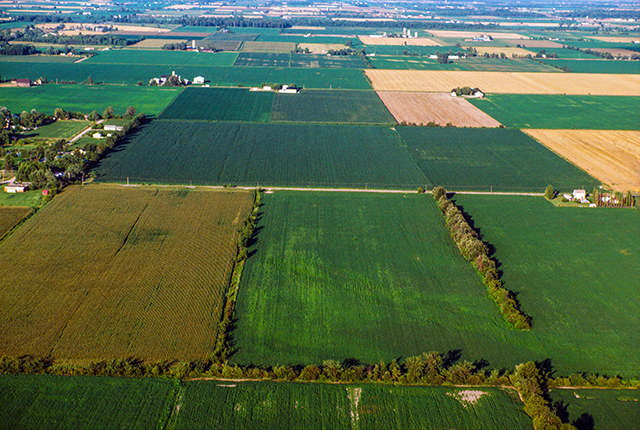
By Martha Crump
That old adage, “What you don’t know won’t hurt you.,” may have some basis in truth when applied to minor situations. However, when what you don’t know is presented in the form of a “Trojan Horse” and is what amounts to an incredible attempt to fleece American property rights, it becomes a different story altogether.
To put this unbelievable tale together, we need to step back to Joe Biden’s 2021 Executive Order which pledged commitment to help restore balance on public lands and waters, to create jobs, and to provide a path to align the management of America’s public lands and waters with our nation’s climate, conservation, and clean energy goals.
To read more, pick up a copy of the April issue of NTFR magazine. To subscribe by mail, call 940-872-5922.
Country Lifestyles
Lacey’s Pantry: Strawberry Sorbet
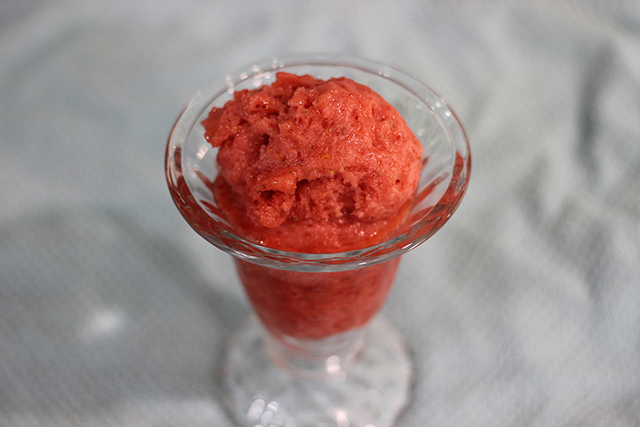
By Lacey Vilhauer
Ingredients:
1 whole lemon, seeded and roughly chopped
2 cups sugar
2 pounds strawberries, hulled
Juice of 1 to 2 lemons
¼ cup water
Directions:
Place the chopped lemon and sugar in a food processor and pulse until combined. Transfer to a large bowl. Puree the strawberries in a food processor and add to the lemon mixture along with juice of one lemon and water. Taste and add more juice as desired.
To read more, pick up a copy of the April issue of NTFR magazine. To subscribe by mail, call 940-872-5922.
Country Lifestyles
A Mountain Out of a Molehill
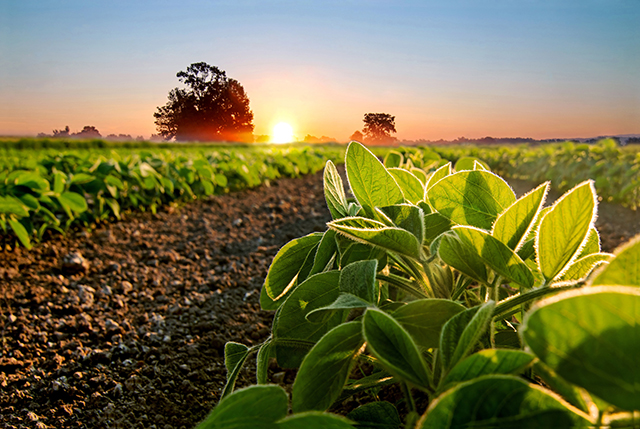
By Nicholas Waters
As winter plods along – come Spring and gopher mounds – homeowners and farmers find themselves playing a familiar song – fiddling while Rome is burning.
Let’s make a mountain out of a molehill. Those mounds on your lawn and pasture could be moles, but they’re more than likely gophers; Plains Pocket Gophers to be pragmatic – Geomys bursarius to be scientific.
These rodents dig and chew, and the damage they can do goes beyond the mounds we mow over. Iowa State University cited a study in Nebraska showing a 35 percent loss in irrigated alfalfa fields due to the presence of pocket gophers; the number jumped to 46 percent in decreased production of non-irrigated alfalfa fields.
The internet is replete with academic research from coast-to-coast on how to curtail gopher populations, or at least control them. Kansas State University – then called Kansas State Agricultural College – also published a book [Bulletin 152] in February 1908 focused exclusively on the pocket gopher.
To read more, pick up a copy of the April issue of NTFR magazine. To subscribe by mail, call 940-872-5922.
-

 Country Lifestyles1 year ago
Country Lifestyles1 year agoScott & Stacey Schumacher: A Growth Mindset
-

 Equine7 months ago
Equine7 months agoThe Will to Win
-

 Country Lifestyles7 years ago
Country Lifestyles7 years agoStyle Your Profile – What your style cowboy hat says about you and new trends in 2017
-

 Country Lifestyles4 years ago
Country Lifestyles4 years agoAmber Crawford, Breakaway Roper
-

 HOME7 years ago
HOME7 years agoGrazing North Texas – Wilman Lovegrass
-

 Country Lifestyles7 years ago
Country Lifestyles7 years agoDecember 2016 Profile, Rusty Riddle – The Riddle Way
-

 Country Lifestyles8 years ago
Country Lifestyles8 years agoJune 2016 Profile – The man behind the mic: Bob Tallman
-

 Outdoor9 years ago
Outdoor9 years agoButtercup or Primrose?

